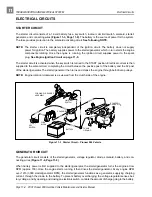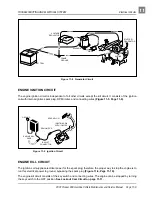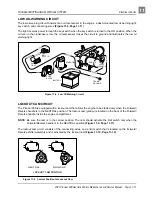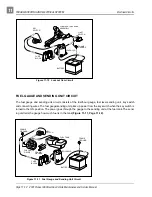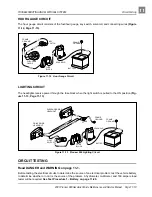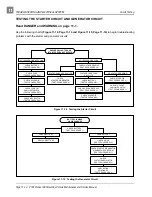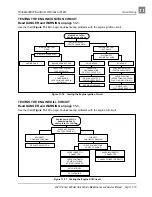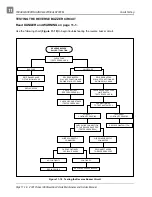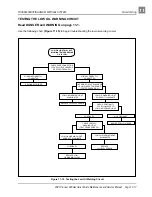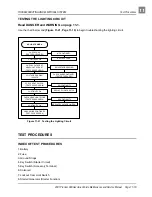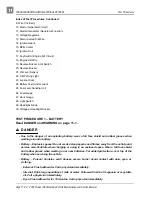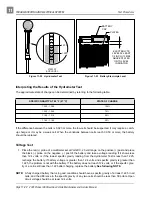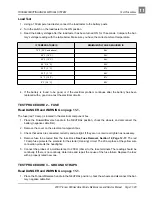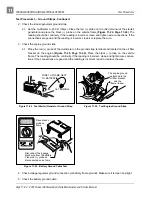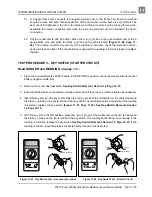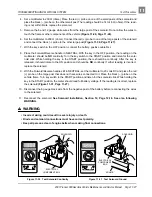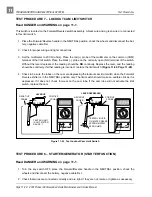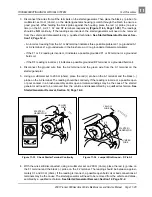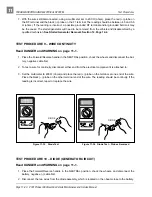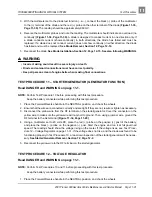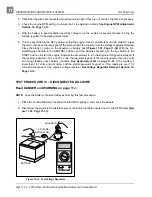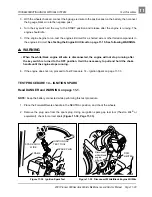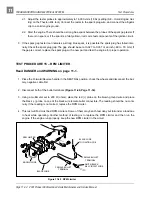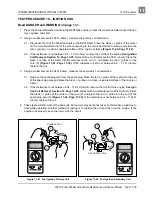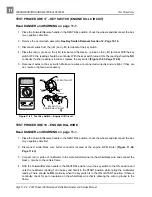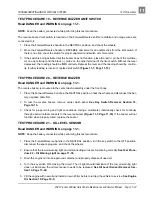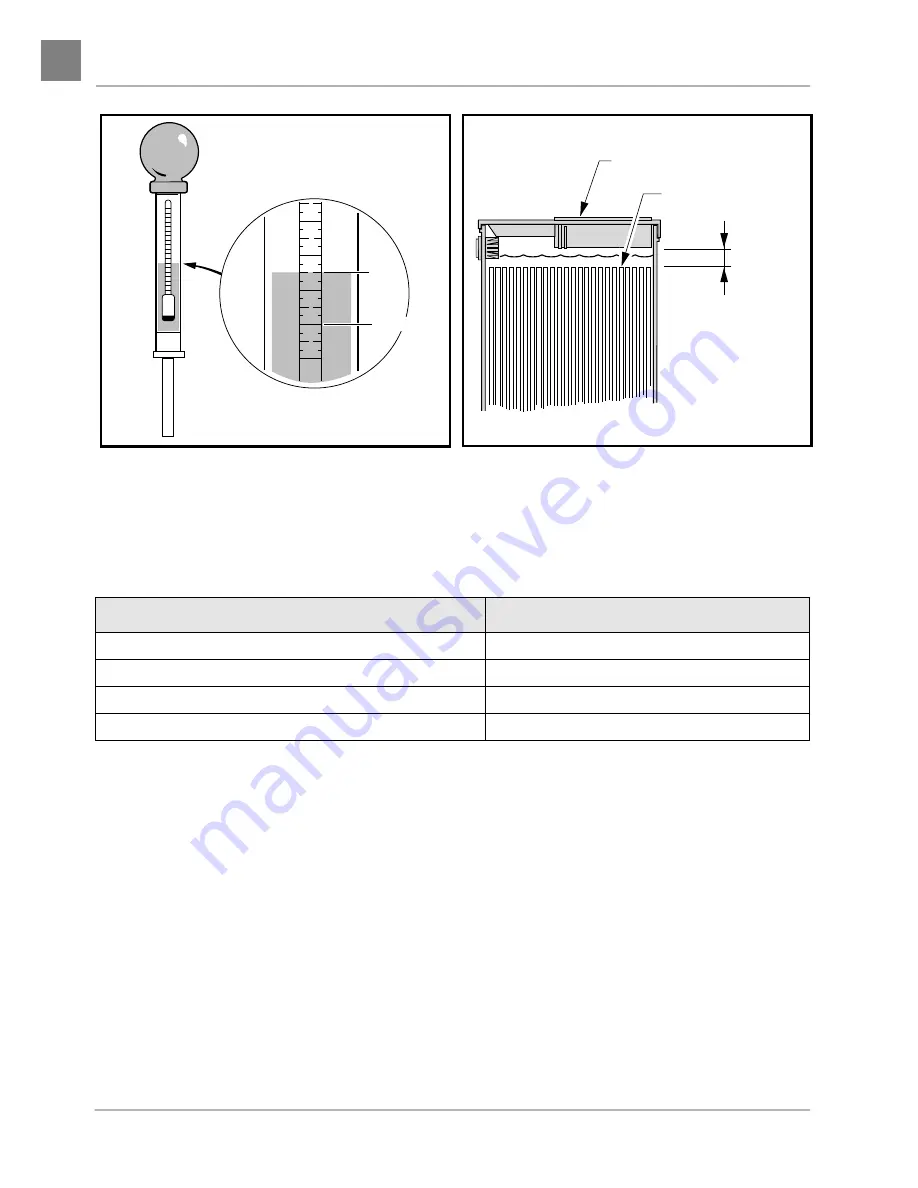
TROUBLESHOOTING AND ELECTRICAL SYSTEM
Test Procedures
Page 11-22 2001 Pioneer 900 Gasoline Vehicle Maintenance and Service Manual
11
Interpreting the Results of the Hydrometer Test
The approximate state of charge can be determined by referring to the following table:
If the difference between the cells is 0.020 or more, the low cell should be suspected. It may require a catch-
up charge or it may be a weak cell. When the variations between cells reach 0.050 or more, the battery
should be replaced.
Voltage Test
1. Place the red (+) probe of a multimeter set at Volts DC, 20 volt range, on the positive (+) post and place
the black (–) probe on the negative (–) post of the battery and take a voltage reading. If it shows less
than 12.4 volts, or if the lowest specific gravity reading from the Hydrometer Test is less than 1.225,
recharge the battery. If battery voltage is greater than 12.4 volts and specific gravity is greater than
1.225, the problem is not with the battery. If the battery does not reach 12.4 volts, or if the specific grav-
ity of a cell is still less than 1.225 after charging, replace the battery. See following NOTE.
NOTE: A fully charged battery that is in good condition should have a specific gravity of at least 1.225 in all
cells, and the difference in the specific gravity of any two cells should be less than 50 points. Open
circuit voltage should be at least 12.4 volts.
Figure 11-22 Hydrometer Test
Figure 11-23 Battery Electrolyte Level
SPECIFIC GRAVITY AT 80 °F (27 °C)
STATE OF CHARGE
1.250 - 1.280
100%
1.220 - 1.240
75%
1.190 - 1.210
50%
1.160 - 1.180
25%
4 0
2 0
6 0
8 0
13 00
1.250
1.280
VIEW AT
EYE LEVEL
ELECTROLYTE
LEVEL AT LEAST
1/2 INCH (13 MM)
ABOVE PLATES
OR TO LEVEL
INDICATOR
PLATES
BATTERY
CAP

